Few famous attractions around the world live up to the tourist hype behind them, but the magnificent Temples of Angkor – and specifically Angkor Wat – truly are an exception. When I first set foot on Angkor Wat back in 2008 my body was covered in goose bumps from the anticipation. Fast forward to 2013 and I’m visiting the temples again for the fourth time and I’m still just as blown away and in awe as I was back in 2008. This time around has been an even more of special experience because I’m enjoying them for the first time with Audrey Bergner.
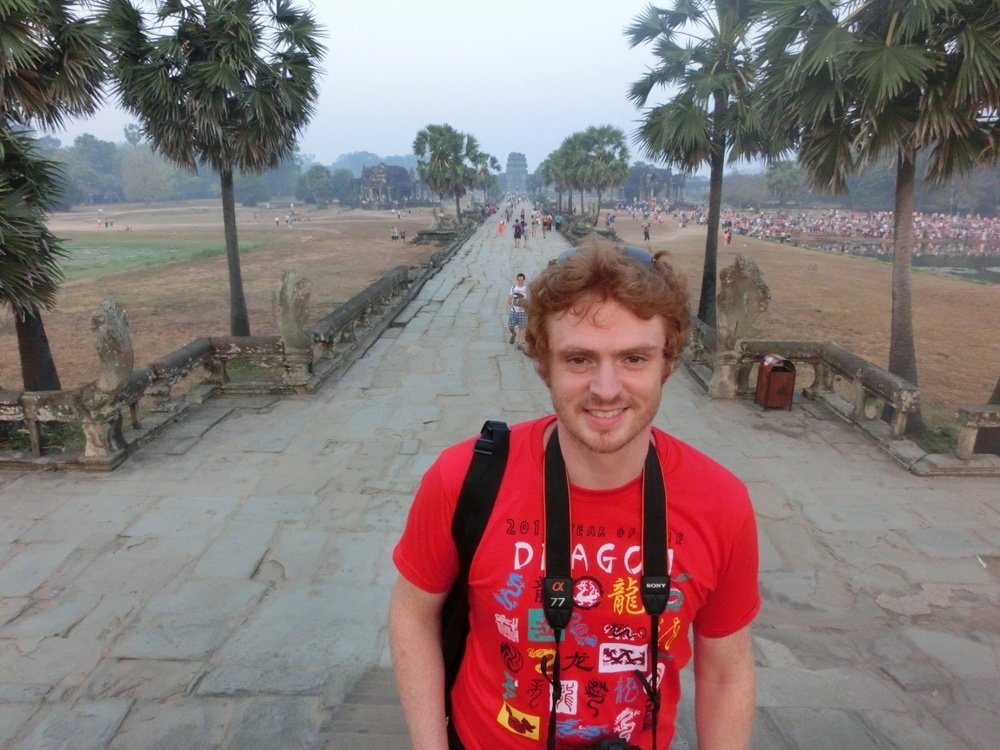
As the largest religious monument in the world, Angkor Wat looms large as the focal point of the many temples of Angkor. Commisioned in the early 12th century by Tamil King Suryavarman, the Hindu temple was dedicated to Vishnu. The moat and outer wall of this gigantic temple comprise an impressive 3.6 kilometers!
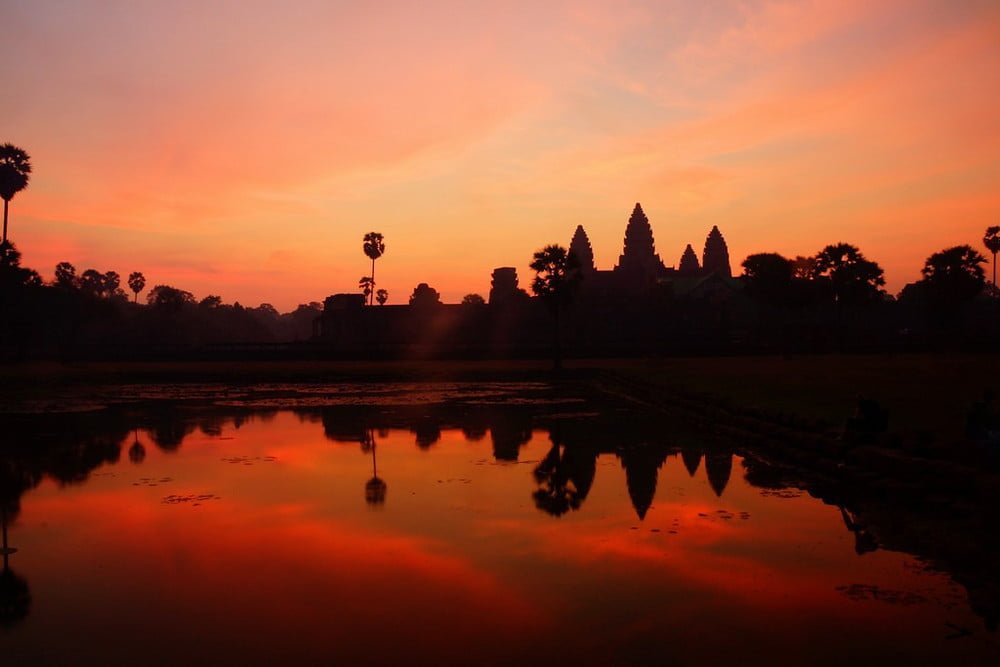
For those exploring Angkor Wat, Cambodia it’s best to wake-up early for sunrise although you won’t be sharing this experience alone. An alternative to the classic ‘pond shot’ is to approach the temple from behind where you’ll get shots of the temple facing the sun as opposed to waiting for the sun to appear.
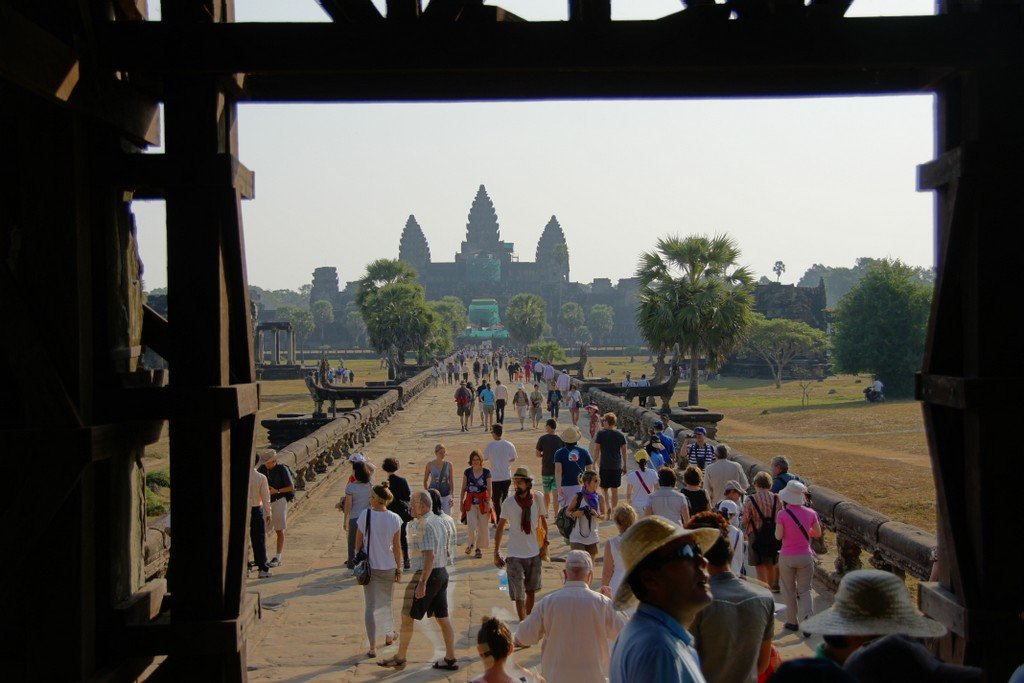
Overview of Angkor Wat
Angkor Wat is an awe-inspiring marvel that dominates the Cambodian skyline. Spanning over 162.6 hectares (402 acres), it holds the title of the largest religious monument globally, surpassing even the Vatican’s St. Peter’s Basilica. Originally constructed in the early 12th century, Angkor Wat was built as a Hindu temple dedicated to the god Vishnu. Its vast expanse and intricate design make it a focal point within the Angkor Archaeological Park, which encompasses more than a thousand ancient temples and ruins.
Situated in Siem Reap province, Angkor Wat serves as the cultural heart of Cambodia. The temple complex is strategically positioned to symbolize the Mount Meru, the home of the gods in Hindu mythology, aligning with celestial bodies in a way that reflects the Khmer Empire’s sophisticated understanding of astronomy. This alignment not only enhances its spiritual significance but also contributes to its breathtaking beauty, especially during sunrise when the temple casts a golden glow over the surrounding landscape.
Angkor Wat’s significance within the Angkor Archaeological Park cannot be overstated. It acts as a gateway to exploring the rich tapestry of Khmer architecture and history. Visitors often start their exploration here, marveling at the intricate bas-reliefs and towering spires that exemplify the zenith of Khmer architectural achievement. The park itself is a UNESCO World Heritage site, recognized for its outstanding universal value and preserved as a monument to human creativity and resilience.
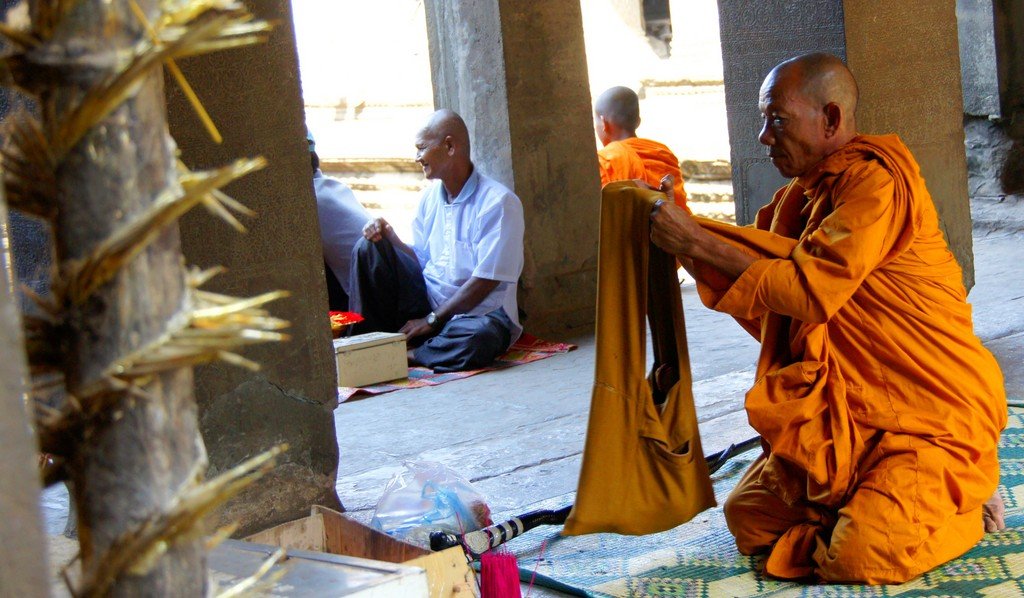
Historical Significance
The origins of Angkor Wat are deeply intertwined with the rise and fall of the Khmer Empire, one of Southeast Asia’s most powerful and enduring civilizations. Commissioned by King Suryavarman II in the early 12th century, Angkor Wat was designed to be both a state temple and the king’s mausoleum. The construction of such an elaborate temple required immense resources, including thousands of laborers, artisans, and engineers, showcasing the empire’s organizational prowess and economic strength.
Angkor Wat’s architectural design is a blend of classical Khmer architecture and the cosmological principles of Hinduism. The central tower, surrounded by four smaller towers, represents Mount Meru, while the surrounding moat symbolizes the cosmic ocean. This symbolic structure underscores the temple’s purpose as a sacred space bridging the earthly realm with the divine.
Over the centuries, Angkor Wat underwent significant transformations, particularly as Cambodia transitioned from Hinduism to Buddhism. By the end of the 13th century, Theravada Buddhism had become the dominant religion, and Angkor Wat was gradually repurposed as a Buddhist temple. This transformation is evident in the incorporation of Buddhist iconography and practices within the temple complex, reflecting the adaptive nature of the Khmer Empire in embracing new religious paradigms while preserving its architectural heritage.
The historical significance of Angkor Wat extends beyond its religious and cultural roles. It serves as a symbol of national pride and resilience, especially after the devastation of the Khmer Rouge regime in the 1970s. The temple’s restoration and preservation efforts in recent decades have not only salvaged a crucial part of Cambodia’s heritage but also revitalized the country’s tourism industry, providing a beacon of hope and renewal.

Why Visit Angkor Wat
Architectural Marvel and Artistic Achievements
Angkor Wat is a masterpiece of architectural ingenuity and artistic excellence. Its sprawling layout, intricate carvings, and harmonious proportions reflect the Khmer Empire’s advanced engineering techniques and aesthetic sensibilities. The temple’s walls are adorned with detailed bas-reliefs that depict scenes from Hindu mythology, daily life, and historical events, offering a visual narrative that brings the past to life. The meticulous craftsmanship evident in every stone highlights the dedication and skill of the artisans who dedicated their lives to building this monumental structure.
The temple’s design incorporates advanced water management systems, such as reservoirs and canals, which not only supported the temple’s construction but also sustained the surrounding communities. This integration of functionality and beauty is a hallmark of Khmer architecture, making Angkor Wat a timeless example of sustainable and harmonious design.
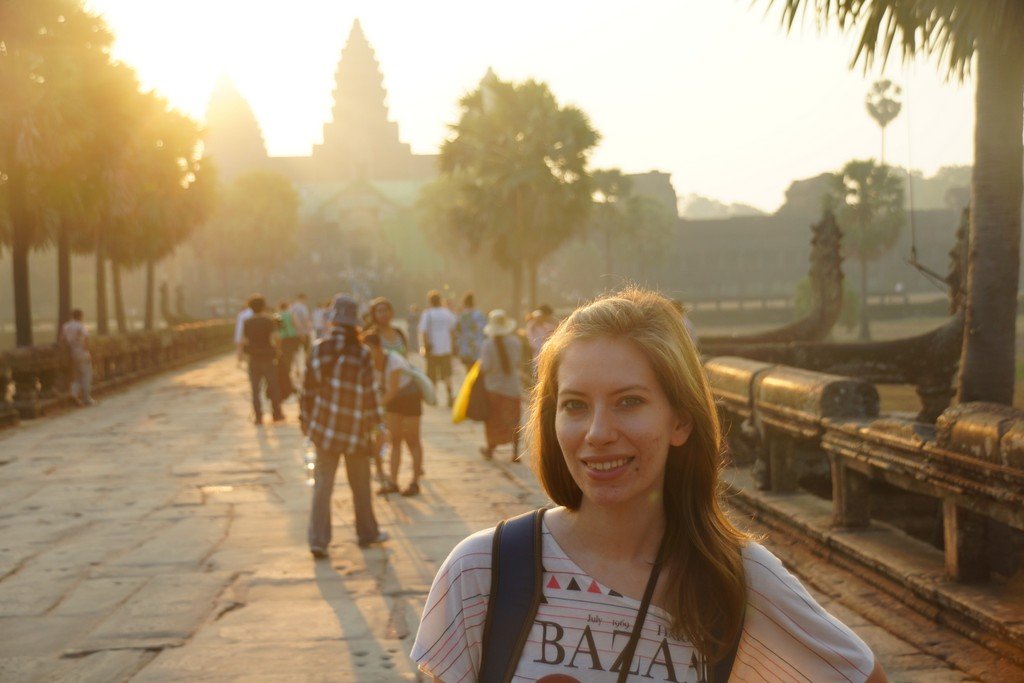
Cultural and Spiritual Importance
Beyond its architectural grandeur, Angkor Wat holds profound cultural and spiritual significance. It is a place of worship and pilgrimage for Buddhists and Hindus alike, embodying the spiritual aspirations of the Khmer people. The temple complex is a sanctuary where visitors can experience a sense of peace and connection with Cambodia’s spiritual heritage. The annual Cambodian New Year celebrations, traditional ceremonies, and religious festivals held at Angkor Wat further enhance its role as a living cultural hub.
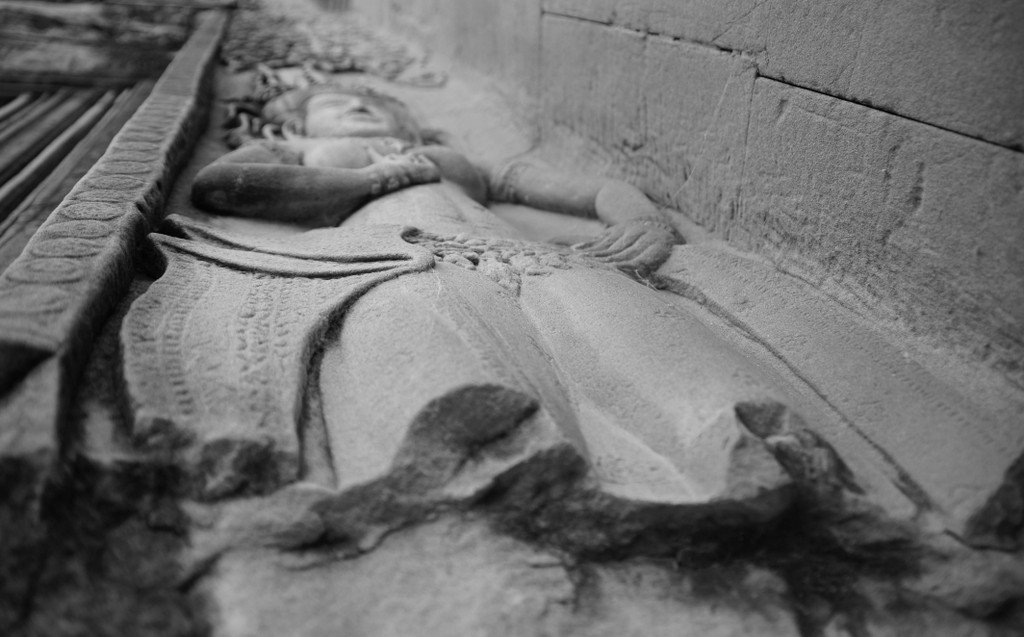
Exploring Angkor Wat Temple Complex
Angkor Wat is not just a single temple but a sprawling complex that embodies the zenith of Khmer architectural and artistic achievement. Exploring its vast grounds reveals a harmonious blend of spirituality, engineering prowess, and intricate artistry. This section delves into the key features of Angkor Wat, highlights must-see areas, and discusses the benefits of guided tours versus self-exploration.

Key Features of Angkor Wat
Architectural Layout and Symbolic Design
Angkor Wat is meticulously designed to symbolize Mount Meru, the sacred abode of the Hindu gods. The temple’s layout is a perfect reflection of Khmer cosmology, aligning with celestial bodies to create a divine connection between earth and heaven. The complex is structured around a central axis, representing the mythical mountain, with concentric moats and walls symbolizing the surrounding ocean and cosmic boundaries.
The symmetrical design enhances the temple’s grandeur, with each element carefully positioned to maintain balance and harmony. The layout consists of five towers arranged in a quincunx pattern, each representing the peaks of Mount Meru. This architectural symmetry not only serves aesthetic purposes but also holds deep spiritual significance, reinforcing the temple’s role as a celestial sanctuary.
Notable Structures: Central Towers, Galleries, and Bas-Reliefs
At the heart of Angkor Wat are its central towers, which rise majestically above the complex, piercing the sky and drawing the eye upward. These towers are intricately decorated with carvings and are accessible via steep staircases that reward climbers with panoramic views of the surrounding landscape.
The galleries of Angkor Wat are expansive corridors adorned with elaborate bas-reliefs—intricate carvings that depict scenes from Hindu mythology, daily life, and historical events. These bas-reliefs are masterpieces of Khmer art, showcasing the empire’s advanced carving techniques and storytelling prowess. Walking through these galleries, visitors can marvel at the detailed craftsmanship and the vibrant narratives etched into the stone walls.
Another architectural highlight is the central sanctuary, a sacred space that houses symbolic representations of the universe. This area is surrounded by smaller shrines and statues, each contributing to the temple’s spiritual ambiance. The interplay of light and shadow within these structures creates a dynamic and immersive environment, enhancing the visitor’s connection to the temple’s divine purpose.
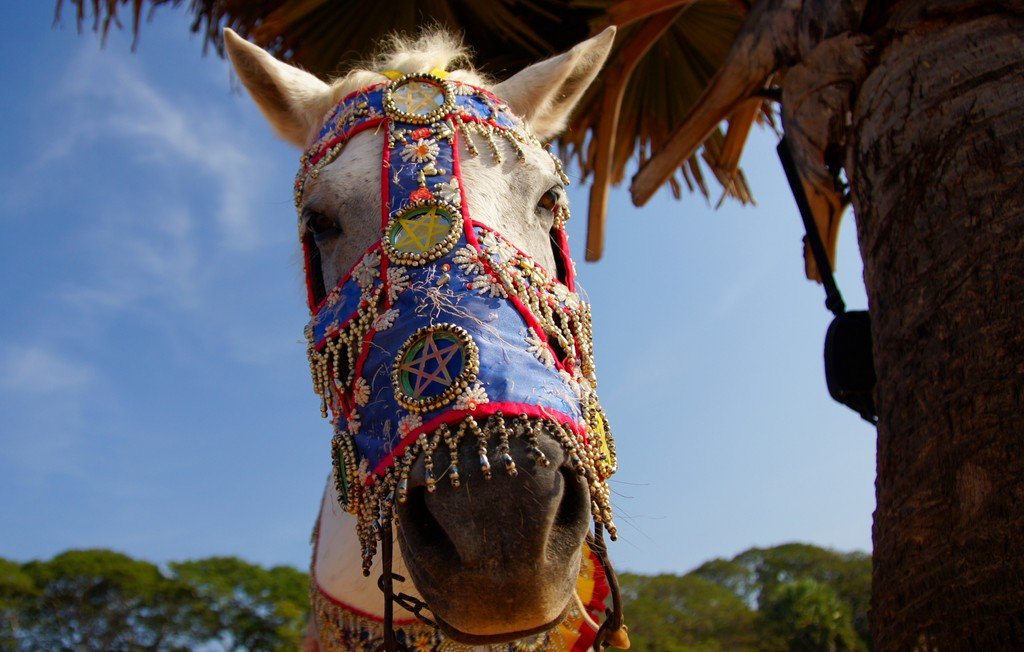
Must-See Areas and Highlights
The Grand Gallery and the Churning of the Sea of Milk Relief
One of the most iconic features of Angkor Wat is the Grand Gallery, a long, narrow corridor that exemplifies the architectural sophistication of the Khmer Empire. The ceiling of the Grand Gallery is adorned with celestial carvings that symbolize the heavens, creating an ethereal atmosphere as sunlight filters through the windows.
A standout section within the Grand Gallery is the Churning of the Sea of Milk relief. This elaborate carving portrays the Hindu mythological event where gods and demons collaborate to churn the ocean to obtain the elixir of immortality. The intricate details capture the dynamic movement of the churning, the struggle between good and evil, and the divine intervention that ultimately results in the emergence of various celestial beings and treasures. This relief not only serves as a narrative masterpiece but also as a reflection of the Khmer’s deep religious devotion and artistic excellence.

The Reflection Pool and Sunrise Views
The reflection pool, situated at the entrance of Angkor Wat, plays a crucial role in the temple’s aesthetic and symbolic design. This tranquil body of water mirrors the temple’s grandeur, creating a stunning visual symmetry that enhances its beauty. Early morning visits to the reflection pool offer photographers and visitors alike the opportunity to capture the temple bathed in the soft hues of sunrise, with the mirrored image adding a magical dimension to the experience.
Experiencing sunrise at Angkor Wat is a must for any visitor. As the first light of day illuminates the temple’s intricate carvings and towering spires, the entire complex transforms into a radiant spectacle. The interplay of light and shadow highlights the architectural details, creating a breathtaking panorama that is both serene and awe-inspiring. This early morning ritual not only provides optimal lighting for photography but also allows visitors to witness the temple in its most tranquil and majestic state.
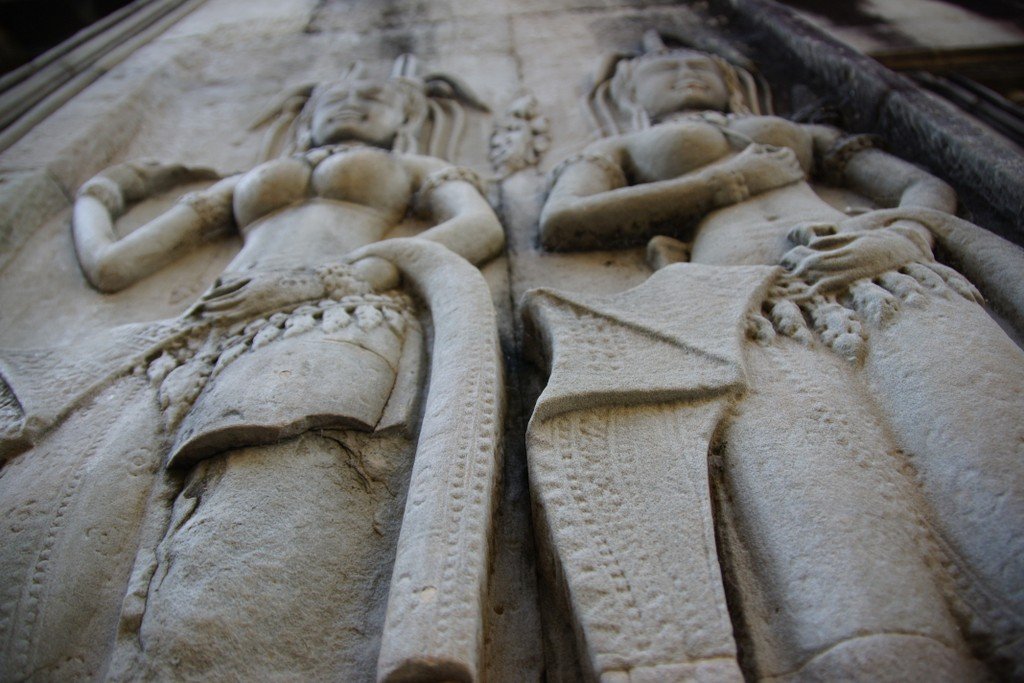
Guided Tours vs. Self-Exploration
Benefits of Hiring a Local Guide
Opting for a guided tour can significantly enhance your experience at Angkor Wat. Local guides possess in-depth knowledge of the temple’s history, architecture, and cultural significance, providing valuable insights that you might miss when exploring independently. They can explain the symbolism behind various carvings, share fascinating stories from the Khmer Empire, and point out hidden details that enrich your understanding of the site.
Guides also help navigate the vast temple complex, ensuring you don’t miss key areas and making your visit more efficient. Their expertise can tailor the tour to your interests, whether you’re focused on photography, history, or spirituality. Additionally, hiring a guide supports the local economy and fosters cultural exchange, offering a more immersive and respectful exploration of Angkor Wat.
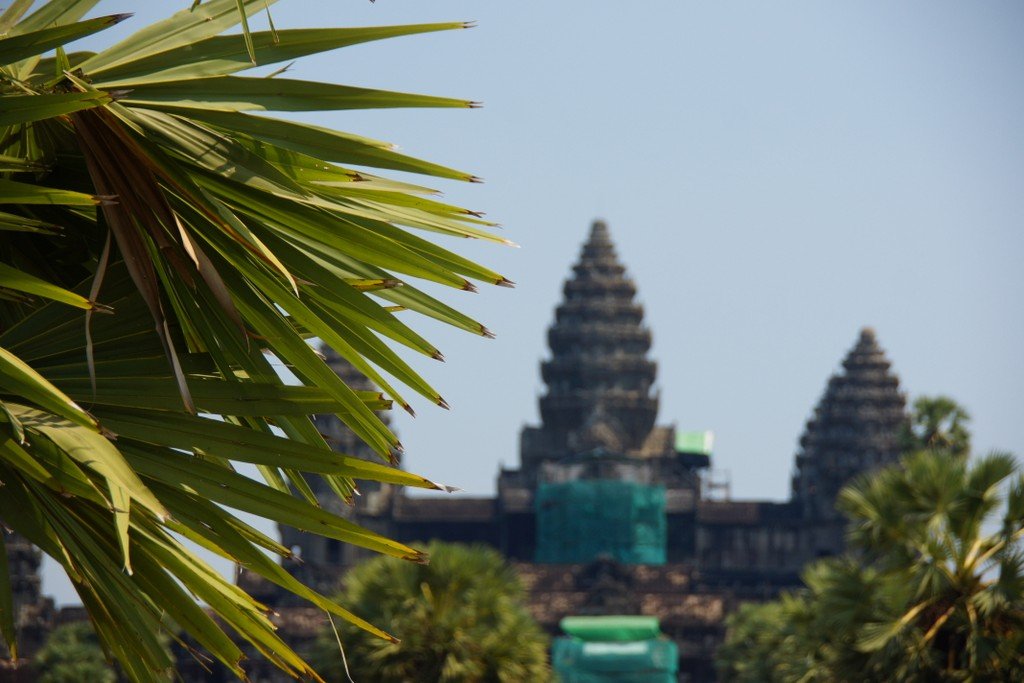
Advantages of Exploring Independently with Maps and Informational Materials
For travelers who prefer flexibility and autonomy, self-guided exploration is a fantastic option. With detailed maps and informational materials available at the entrance, you can navigate Angkor Wat at your own pace, spending more time in areas that particularly interest you. This approach allows for a personalized experience, enabling you to linger in quiet corners, revisit favorite spots, and explore off-the-beaten-path areas without adhering to a fixed schedule.
Self-exploration is also more cost-effective, as it eliminates the need to hire a guide. However, it requires a bit more preparation and awareness, ensuring you have the necessary resources and understanding to fully appreciate the temple’s complexities. Whether you choose to explore independently or with a guide, Angkor Wat’s expansive layout and rich history offer endless opportunities for discovery and awe.

Planning Your Visit To Angkor Wat
Proper planning is key to ensuring a memorable and hassle-free experience when visiting Angkor Wat. From choosing the best time to visit and navigating transportation options to understanding entry fees and passes, this guide will help you prepare for your journey to one of the world’s most iconic temples.
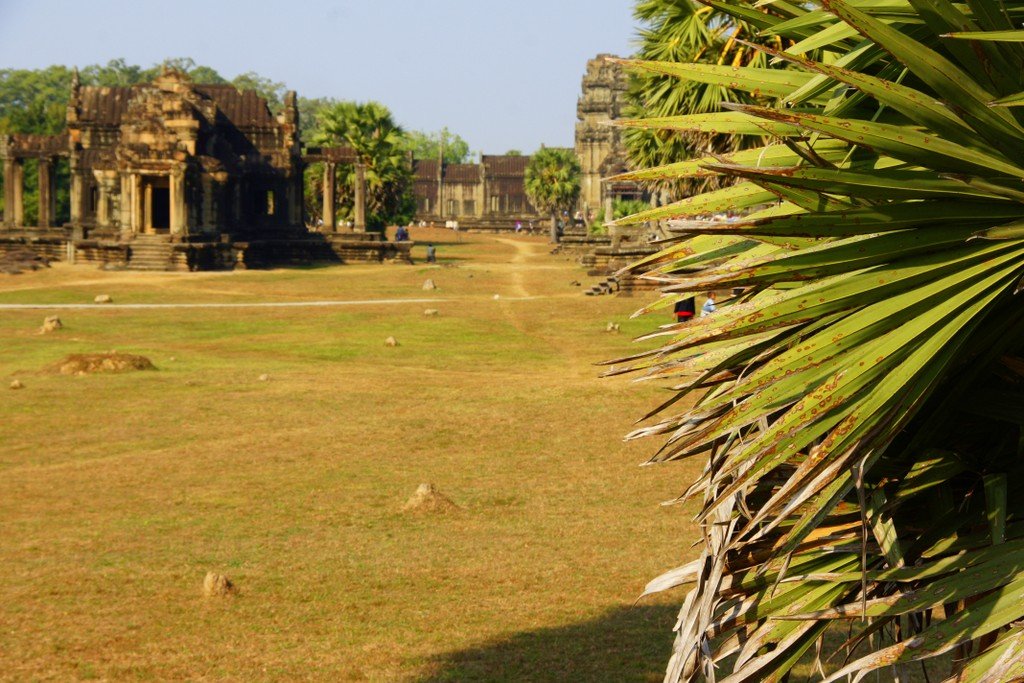
Best Time to Visit
Weather Considerations: Dry vs. Rainy Season
Cambodia’s climate is tropical, characterized by distinct dry and rainy seasons, each offering unique experiences at Angkor Wat.
Dry Season (November to April):
- Ideal Weather: This period is the most popular time to visit Angkor Wat. The weather is generally sunny with minimal rainfall, making it perfect for exploring the temple complex.
- Temperatures: Ranging from 25°C to 35°C (77°F to 95°F), the dry season offers comfortable conditions for long days of sightseeing.
- Visibility: Clear skies enhance the architectural beauty of Angkor Wat, providing excellent lighting for photography.
Rainy Season (May to October):
- Lush Scenery: Rain showers transform the landscape, making the surroundings greener and more vibrant.
- Fewer Crowds: This season sees a dip in tourist numbers, allowing for a more peaceful and intimate visit.
- Humidity and Rain: Be prepared for sudden downpours and high humidity. Carrying a lightweight rain jacket and waterproof gear is advisable.
Peak Tourist Seasons and Avoiding Crowds
Peak Season (November to February):
- High Demand: This is the busiest time to visit Angkor Wat, coinciding with the dry season and cooler temperatures.
- Early Arrivals: To avoid the largest crowds, plan to arrive early in the morning. Sunrise at Angkor Wat is breathtaking and less crowded, offering a serene start to your day.
Shoulder Seasons (March to May and September to October):
- Balanced Experience: These months strike a balance between manageable weather and moderate tourist numbers.
- Flexible Scheduling: Visiting during these times allows you to enjoy favorable conditions without the intense crowds of peak season.
Low Season (June to August):
- Quiet Exploration: The rainy season brings fewer tourists, providing a tranquil environment to explore the temples.
- Unique Atmosphere: The occasional rain adds a mystical quality to the ruins, perfect for those who don’t mind the weather and seek a more personal experience.
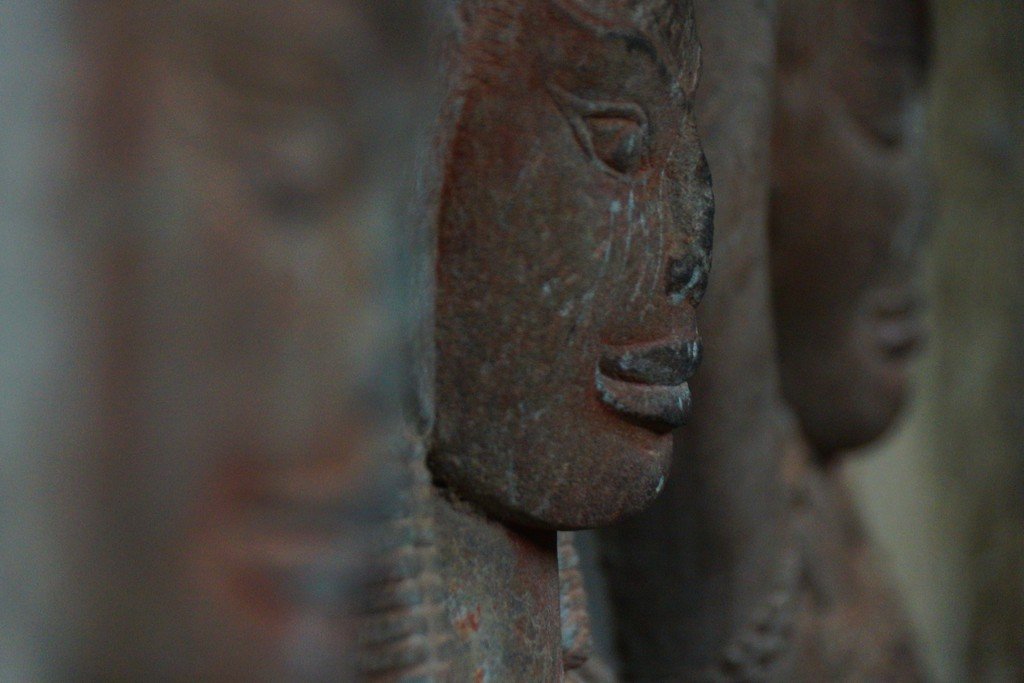
How to Get to Angkor Wat
Transportation Options from Siem Reap
Angkor Wat is conveniently located near Siem Reap, the primary gateway to the Angkor Archaeological Park. Here are the main transportation options to consider:
Tuk-Tuk:
- Flexibility: Tuk-tuks are ubiquitous in Siem Reap and offer a flexible, door-to-door service.
- Cost-Effective: They are an affordable option, especially for short trips. Negotiate the fare beforehand to avoid surprises.
- Local Experience: Riding a tuk-tuk provides a chance to interact with locals and enjoy the vibrant street scenes of Siem Reap.
Taxi:
- Comfort and Convenience: Taxis offer a more comfortable and private mode of transport, ideal for families or groups.
- Fixed Rates: Many taxi services provide fixed rates for day tours, which can be a hassle-free way to explore multiple temples, including Angkor Wat.
- Air-Conditioned: Most taxis are air-conditioned, providing relief from the tropical heat.
Bicycle:
- Eco-Friendly: Renting a bicycle is an environmentally friendly option that allows you to explore at your own pace.
- Scenic Routes: Cycling offers the opportunity to enjoy the picturesque countryside and hidden paths that cars and tuk-tuks might miss.
- Physical Activity: Ideal for fitness enthusiasts who enjoy active travel.
Guided Tours:
- Comprehensive Packages: Guided tours often include transportation, entrance fees, and the expertise of a knowledgeable guide.
- Educational Insights: Guides provide valuable information about the history, architecture, and cultural significance of Angkor Wat and other temples.
- Convenience: This option is perfect for first-time visitors who prefer a structured itinerary.
Distance and Travel Time from Siem Reap City Center
Proximity:
- Angkor Wat is situated approximately 6 kilometers (3.7 miles) from Siem Reap’s city center, making it easily accessible by various modes of transportation.
Travel Time:
- Tuk-Tuk or Taxi: Typically takes around 20 to 30 minutes depending on traffic and your starting point in the city.
- Bicycle: Approximately 1 to 1.5 hours, offering a leisurely ride through scenic routes.
- Guided Tours: Travel time is similar to tuk-tuk or taxi, but guided tours may include additional stops and extended exploration times.
Entry Fees and Passes
Details of the Angkor Pass (1-Day, 3-Day, 7-Day Passes)
To explore the vast Angkor Archaeological Park, visitors must purchase an Angkor Pass, which grants access to all temples, including Angkor Wat. The pass offers flexibility based on the length of your stay and the extent of your exploration.
1-Day Pass:
- Cost: Approximately $37 USD.
- Ideal For: Travelers with limited time who wish to visit a few key temples, including Angkor Wat and nearby attractions.
- Validity: 24 hours from the time of first use.
3-Day Pass:
- Cost: Around $62 USD.
- Ideal For: Visitors planning a more comprehensive exploration, allowing visits to numerous temples spread over three days.
- Validity: 72 hours from the time of first use.
7-Day Pass:
- Cost: Approximately $72 USD.
- Ideal For: History enthusiasts and avid photographers who want to delve deeply into the park’s offerings.
- Validity: 7 consecutive days from the time of first use.
Additional Costs for Special Tours or Access to Certain Areas
While the Angkor Pass covers general entry, certain activities and special areas may incur additional costs:
Guided Tours:
- Local Guides: Hiring a local guide can cost between $10 to $15 USD per hour. Guides provide in-depth knowledge and personalized experiences.
- Private Tours: These can be arranged for a higher fee, offering tailored itineraries and exclusive access to specific sites.
Special Exhibits and Areas:
- Beng Mealea or Preah Khan: Some remote temples might require extra fees or separate permits if they fall outside the standard pass coverage.
- Photography Workshops: Professional photography tours and workshops may have additional charges, providing specialized insights and techniques.
Transportation:
- Tuk-Tuk or Taxi Fares: Depending on the distance and negotiation, fares can range from $10 to $20 USD each way.
- Bicycle Rentals: Typically cost around $5 to $10 USD per day.
Amenities:
- Refreshments and Souvenirs: Purchasing food, drinks, or souvenirs within the park will involve extra expenses, though these are generally modest.

Accommodation and Dining in Siem Reap
After immersing yourself in the awe-inspiring beauty of Angkor Wat, Siem Reap offers a vibrant array of accommodation and dining options to complement your visit. Whether you’re seeking luxurious comfort, budget-friendly stays, or authentic culinary experiences, Siem Reap caters to all preferences. This section explores where to stay, what to eat, and how to enjoy the lively evening scene in this charming Cambodian town.
Where to Stay: Hotels and Resorts
Range of Accommodations from Budget to Luxury
Siem Reap boasts a diverse spectrum of accommodations, ensuring that every traveler finds a place that suits their budget and style.
Budget Accommodations: For those traveling on a tight budget, Siem Reap offers numerous guesthouses and hostels that provide comfortable stays without breaking the bank. These options often include essential amenities, friendly service, and a chance to meet fellow travelers.
Mid-Range Hotels: Mid-range hotels strike a balance between affordability and comfort. These establishments typically feature modern amenities such as swimming pools, free Wi-Fi, and on-site restaurants, providing a pleasant and convenient stay.
Luxury Resorts: For travelers seeking indulgence, Siem Reap is home to several luxury resorts and boutique hotels. These high-end accommodations offer exquisite amenities, including spa services, fine dining, and stunning views of the surrounding landscapes. Many luxury resorts are designed with traditional Khmer architecture, blending opulence with cultural elegance.
Recommendations for Proximity to Angkor Wat
Choosing a hotel close to Angkor Wat can enhance your overall experience, allowing for easy access to the temples, especially for early morning or late afternoon visits.
Borei Angkor Resort & Spa: Located just minutes from the main entrance of Angkor Wat, Borei Angkor offers elegant rooms, a tranquil spa, and lush gardens. Its proximity makes it an excellent choice for those wanting to maximize their time exploring the temples.
Park Hyatt Siem Reap: This luxury hotel is nestled near the river and offers sophisticated rooms, a world-class spa, and exceptional dining options. Its central location provides easy access to both Angkor Wat and the vibrant town center.
Lub d Cambodia Siem Reap: Ideal for budget-conscious travelers, Lub d offers clean, modern dorms and private rooms. Situated close to Pub Street and other key attractions, it’s perfect for those looking to explore Siem Reap without spending a fortune on accommodation.
Local Cuisine and Dining Options
Traditional Khmer Dishes to Try
Exploring Siem Reap’s culinary scene is a delightful journey into the flavors of Cambodia. Don’t miss these traditional Khmer dishes:
Amok Trey: A quintessential Cambodian dish, Amok Trey is a creamy curry made with fish, coconut milk, and spices, steamed in banana leaves. Its rich and aromatic flavors make it a must-try for any visitor.
Lok Lak: This popular dish features marinated beef stir-fried with onions and served with a tangy lime and black pepper dipping sauce. Lok Lak is often accompanied by fresh vegetables and rice, providing a hearty and satisfying meal.
Khmer Red Curry: Less spicy than its Thai counterpart, Khmer Red Curry is made with beef, chicken, or fish, simmered in a fragrant coconut milk base with potatoes, carrots, and eggplants. It’s typically served with bread, reflecting French culinary influences.
Popular Restaurants and Street Food Spots in Siem Reap
Siem Reap’s dining scene is a vibrant mix of traditional eateries, modern restaurants, and bustling street food markets.
Chez Mam: A beloved spot among locals and tourists alike, Chez Mam offers delicious Khmer cuisine in a relaxed setting. Their Amok Trey and Lok Lak are highly recommended for an authentic taste of Cambodia.
Marum Restaurant: Run by a local non-profit organization, Marum provides training and employment to marginalized youth. Their menu features a variety of traditional dishes, with the added satisfaction of supporting a good cause.
Street Food on Pub Street: For an immersive culinary experience, explore the street food stalls on Pub Street. Here, you can sample a variety of snacks and meals, from grilled meats and fresh spring rolls to sweet desserts and refreshing beverages.
Genevieve’s Restaurant: Set in a beautiful traditional Khmer house, Genevieve’s offers a mix of Cambodian and international dishes. Their breakfast options and evening dinners are perfect for starting and ending your day with flavorful meals.
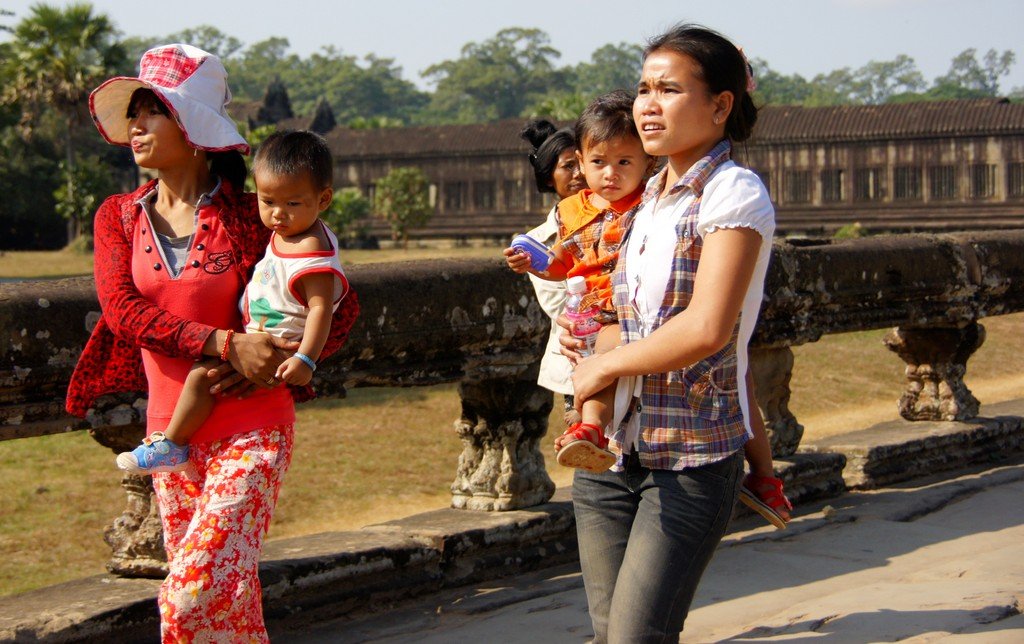
Night Markets and Entertainment
Overview of the Angkor Night Market and Pub Street
As the sun sets, Siem Reap transforms into a lively hub of activity with its vibrant night markets and bustling Pub Street.
Angkor Night Market: Located near the Old Market, the Angkor Night Market is a treasure trove of souvenirs, handicrafts, and local products. Browse through stalls selling everything from silk scarves and jewelry to traditional artwork and home décor. The market is also a great place to sample street food and enjoy live performances.
Pub Street: The heart of Siem Reap’s nightlife, Pub Street is lined with bars, restaurants, and shops. It’s the perfect place to unwind after a day of temple exploration. Enjoy a drink at one of the many outdoor bars, indulge in delicious food, or simply soak in the vibrant atmosphere. Pub Street is also home to numerous live music venues and clubs, offering entertainment options for every taste.
Cultural Performances and Evening Activities
Beyond shopping and dining, Siem Reap offers a variety of cultural performances and evening activities that showcase Cambodia’s rich heritage.
Apsara Dance Shows: Experience the elegance of traditional Apsara dance, a classical Khmer dance form that tells stories of ancient mythology and royal courts. Many restaurants and cultural centers host nightly performances, providing an enchanting glimpse into Cambodia’s artistic traditions.
Phare, The Cambodian Circus: For a unique and captivating experience, visit Phare Circus, where local performers combine traditional storytelling with acrobatics, theater, and music. This innovative circus not only entertains but also empowers young Cambodians by providing training and employment opportunities.
Nighttime Temple Visits: Some tour operators offer nighttime visits to Angkor Wat and other temples, allowing you to experience their mystical ambiance under the stars. These tours often include guided walks, storytelling, and opportunities for night photography, creating unforgettable memories of the temples illuminated by moonlight.
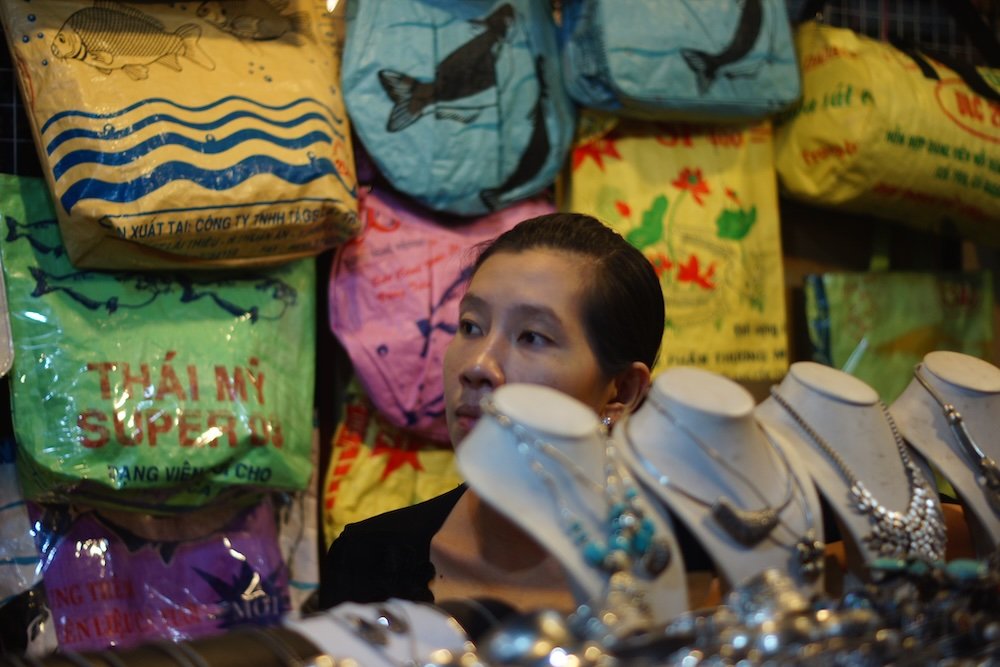
Nearby Attractions and Activities: What To Do After Visiting Angkor Wat
While Angkor Wat is undeniably the crown jewel of the Angkor Archaeological Park, the surrounding area offers a wealth of additional attractions and activities that enrich your Cambodian adventure. From exploring other magnificent temples to immersing yourself in local culture and engaging in outdoor pursuits, Siem Reap and its environs provide diverse experiences that cater to all interests.
Other Temples in Angkor Archaeological Park
Highlights of Ta Prohm, Bayon, and Banteay Srei
Beyond Angkor Wat, the Angkor Archaeological Park is home to several other iconic temples, each with its own unique charm and historical significance. Ta Prohm, Bayon, and Banteay Srei are among the most noteworthy.
Ta Prohm is famous for its haunting beauty, where nature has reclaimed the temple in a mesmerizing embrace. Towering trees and sprawling roots intertwine with the stone structures, creating an ethereal atmosphere that has made it a favorite backdrop for the film “Tomb Raider.” Unlike other temples that have been meticulously restored, Ta Prohm retains much of its original state, offering visitors a glimpse into the symbiotic relationship between architecture and nature.
Bayon, located in the heart of Angkor Thom, stands out with its multitude of serene stone faces. These faces, each with distinct expressions, are carved into the towers and walls, symbolizing the bodhisattva Avalokiteshvara. Bayon is renowned for its intricate bas-reliefs that depict everyday life, mythological scenes, and the intricate details of Khmer society. Walking through Bayon, you can admire the seamless blend of religious symbolism and artistic excellence.
Banteay Srei, often referred to as the “Citadel of the Women,” is a masterpiece of intricate carvings and delicate craftsmanship. Constructed from pink sandstone, Banteay Srei is smaller in scale compared to Angkor Wat but boasts some of the most refined and detailed carvings in the park. The temple’s bas-reliefs portray scenes from Hindu mythology, as well as depictions of local life and spiritual rituals, highlighting the artistic zenith of the Khmer Empire.
Unique Features and Historical Backgrounds
Each of these temples offers distinct architectural styles and historical narratives. Ta Prohm’s fusion with the natural environment reflects the Khmer’s reverence for nature and their ability to harmonize built structures with the natural world. Bayon’s multitude of faces serves both a religious purpose and an architectural marvel, showcasing the Khmer’s sophisticated artistic techniques. Banteay Srei’s intricate carvings demonstrate the high level of craftsmanship and the cultural importance placed on artistic expression during the Khmer Empire’s peak.
Exploring these temples provides a comprehensive understanding of the Angkor civilization’s architectural diversity and their profound spiritual and cultural practices. Each temple, with its unique features and historical context, contributes to the rich tapestry that makes the Angkor Archaeological Park a UNESCO World Heritage site of unparalleled value.
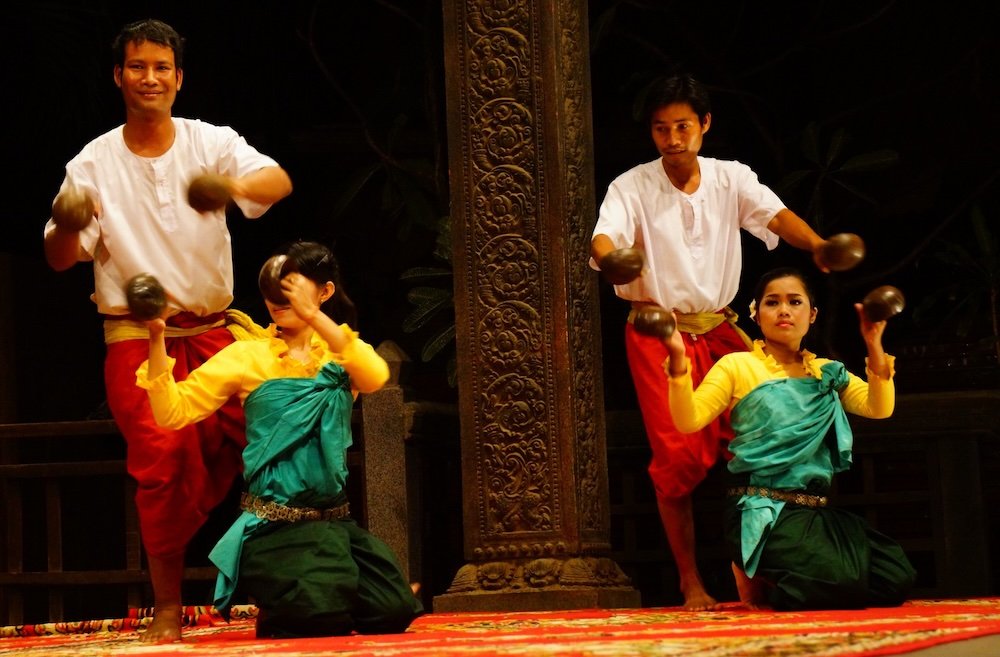
Cultural Experiences in Siem Reap
Traditional Apsara Dance Shows and Workshops
Siem Reap is not just a gateway to ancient temples; it is also a vibrant cultural hub where traditional Khmer arts and crafts thrive. One of the most enchanting cultural experiences is attending an Apsara dance show. This classical dance form, characterized by graceful movements and elaborate costumes, depicts stories from Hindu mythology and Khmer folklore. Watching an Apsara performance allows you to appreciate the elegance and precision of Cambodian dance, often accompanied by traditional music and elaborate stage settings.
For those interested in a more hands-on experience, participating in Apsara dance workshops is highly recommended. These workshops provide an opportunity to learn the basics of the dance, guided by skilled instructors who share insights into the cultural significance and techniques of this art form. Engaging in these workshops not only enhances your appreciation for Khmer culture but also offers a memorable and interactive way to connect with the local community.
Visits to Local Villages and Artisan Workshops
To gain a deeper understanding of Cambodian life beyond the temples, consider visiting nearby local villages and artisan workshops. These excursions offer a glimpse into the daily lives of Khmer people and the traditional crafts that have been passed down through generations. Visiting artisan workshops allows you to observe skilled craftsmen at work, creating intricate silk products, pottery, wood carvings, and stone sculptures. Many workshops also offer the chance to purchase unique handmade souvenirs directly from the artisans, supporting local economies and preserving traditional techniques.
Immersive Cultural Interactions
Engaging with local communities through village visits and cultural tours fosters meaningful connections and enriches your travel experience. You can participate in communal activities, learn about traditional farming practices, and gain insights into the resilience and creativity of the Cambodian people. These cultural interactions provide a well-rounded perspective of Siem Reap’s heritage, complementing the historical exploration of the Angkor temples.
Outdoor Adventures: Hiking and Cycling
Scenic Trails Around Angkor Wat and the Surrounding Area
For outdoor enthusiasts, the area surrounding Angkor Wat offers numerous scenic trails that cater to hiking and cycling. These trails wind through lush forests, along serene lakes, and across ancient pathways, providing a peaceful escape from the temple crowds. Hiking around Angkor Wat allows you to explore hidden corners of the archaeological park, discover lesser-known ruins, and enjoy the natural beauty of Cambodia’s landscapes.
Renting Bicycles and Guided Cycling Tours
One of the most popular ways to explore the Angkor Archaeological Park is by renting a bicycle. Cycling offers a flexible and eco-friendly mode of transportation, enabling you to navigate the expansive park at your own pace. Rental shops in Siem Reap provide a variety of bicycles, from basic models to more robust options for long-distance rides. Cycling allows you to fully immerse yourself in the environment, stopping to take photographs, rest in shaded areas, and explore off-the-beaten-path sites.
For those who prefer a structured adventure, guided cycling tours are an excellent option. These tours are led by experienced guides who provide insights into the temples’ history, cultural significance, and architectural details. Guided tours often include stops at key landmarks, scenic viewpoints, and local villages, offering a comprehensive and informative exploration of the region. Additionally, guided cycling tours ensure safety and convenience, especially for those unfamiliar with the local terrain and climate.
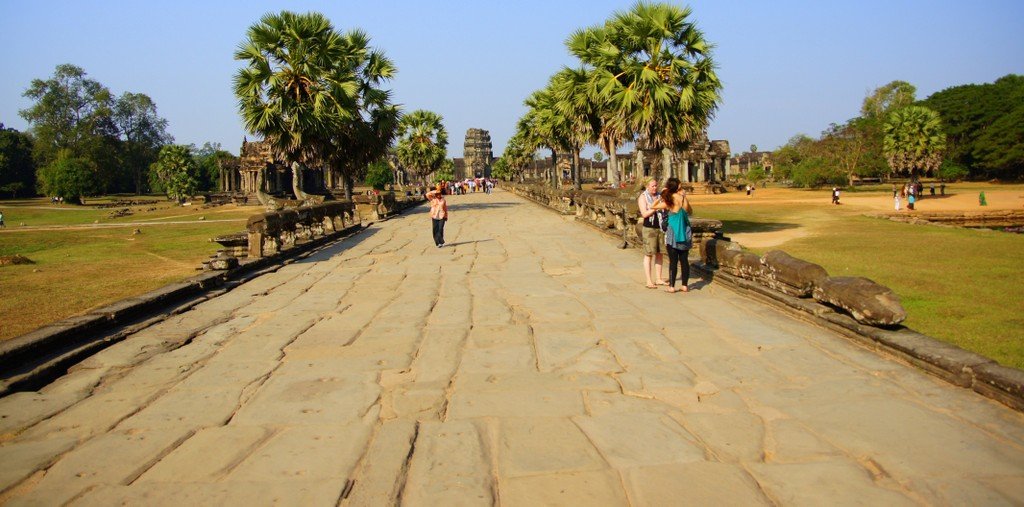
Practical Tips and Final Thoughts: Visiting Angkor Wat
Visiting Angkor Wat is a journey that combines awe-inspiring architecture, rich history, and vibrant culture. To ensure your experience is seamless and memorable, it’s essential to prepare adequately. This section provides practical tips on what to pack, cultural etiquette, safety measures, and final recommendations to make the most of your visit to this magnificent temple complex.
What to Pack for Your Visit
Clothing Recommendations for Day and Night
Cambodia’s climate is tropical, characterized by hot days and cooler nights, especially when exploring temples like Angkor Wat.
Daytime Attire:
- Lightweight, Breathable Fabrics: Opt for cotton or linen clothing to stay cool under the scorching sun.
- Long Sleeves and Pants: Protect your skin from sunburn and insects while maintaining modesty. Lightweight fabrics help keep you comfortable.
- Comfortable Footwear: Sturdy walking shoes or sandals with good grip are essential for navigating the temple grounds and uneven paths.
Evening and Nighttime Attire:
- Warm Layers: Nights can be surprisingly cool, especially during the dry season. Bring a light jacket or a fleece to stay warm.
- Scarves or Shawls: Useful for adding an extra layer and can also serve as a cover-up if visiting during the cooler months.
Essential Items
To fully enjoy your visit, ensure you have these essential items in your backpack:
- Sunscreen: A high SPF sunscreen is crucial to protect your skin from intense UV rays. Reapply throughout the day.
- Wide-Brimmed Hat or Headscarf: Shields your face and neck from the sun, providing additional protection against heat.
- Reusable Water Bottle: Staying hydrated is vital. Carry a durable, refillable bottle to reduce plastic waste.
- Sunglasses: Quality sunglasses with UV protection will safeguard your eyes from glare and harsh sunlight.
- Insect Repellent: While not overly prevalent, it’s wise to be prepared for mosquitoes, especially during the rainy season.
- Personal Medications: Bring any necessary medications, as pharmacies may not be readily available near the temples.
- Small Backpack or Daypack: Ideal for carrying your essentials during temple excursions, allowing you to move freely and comfortably.
Tip: Packing light yet smart ensures you have everything you need without being weighed down, allowing you to explore Angkor Wat with ease and comfort.
Cultural Etiquette and Safety Tips
Dress Code Considerations and Respectful Behavior
Respecting local customs and traditions enhances your visit and fosters positive interactions with the Cambodian people.
- Modest Clothing: When visiting temples, dress modestly by covering your shoulders and knees. Avoid wearing tank tops, shorts, or revealing attire.
- Remove Shoes: It is customary to remove your shoes before entering temple buildings. Always have a place to store your footwear neatly.
- Quiet Respect: Maintain a respectful demeanor within the temple grounds. Avoid loud conversations and refrain from touching or climbing on the structures.
- Photography Etiquette: While photography is allowed, always ask for permission before photographing people, especially monks and locals. Avoid using flash in sacred areas to preserve the ambiance and protect the artwork.
Staying Safe in the Temple Complex and Managing Personal Belongings
Ensuring your safety and safeguarding your belongings allows you to focus on the beauty and history surrounding you.
- Stay Hydrated: Carry ample water and take regular breaks to prevent dehydration, especially during the midday heat.
- Watch Your Step: The temple grounds can be uneven and slippery. Wear appropriate footwear and move carefully to avoid slips and falls.
- Secure Your Belongings: Use a small, secure bag to keep your valuables safe. Avoid carrying large amounts of cash or unnecessary items.
- Be Aware of Your Surroundings: Stay alert and mindful of your surroundings, particularly in crowded areas. This vigilance helps prevent petty theft and ensures a safe experience.
- Follow Guidelines: Adhere to all posted signs and guidelines within the temple complex. These rules are in place to protect both visitors and the historical structures.
Tip: Traveling with a group or hiring a local guide can enhance your safety and provide additional support during your visit.
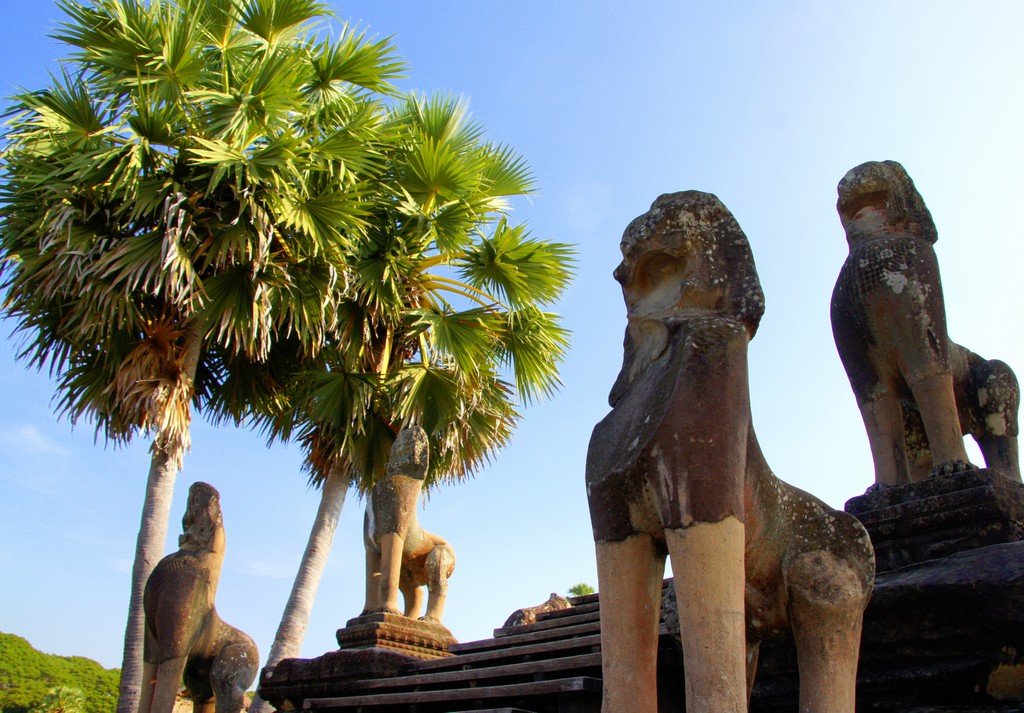
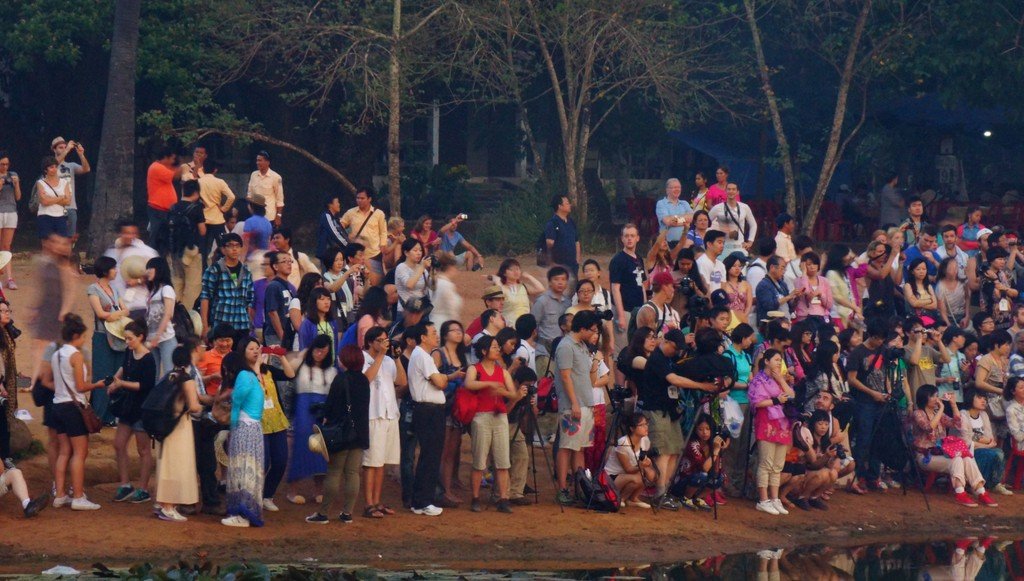
How Many Days Do You Really Need at Angkor?
Everyone turns up in Siem Reap asking the same thing: “How many days do I need for Angkor?”
The honest answer: it depends on your attention span for stone, heat, and crowds.
One Intense Day: The Highlights Hit
If you only have a single full day, think of it as a “greatest hits” album. You’ll see the icons, but hoot damn you’ll work for it.
Rough one-day flow:
- 4:30–5:00 a.m.
- Leave your hotel for Angkor Wat sunrise. Arrange your tuk-tuk the night before.
- 5:30–7:00 a.m.
- Sunrise at the reflecting pool, then slip away as soon as the sky turns pink and start exploring the inner galleries while others are still glued to the water’s edge.
- 7:00–9:30 a.m.
- Angkor Wat interior: bas-reliefs, central towers, slow wander through shaded corners.
- 9:30–11:30 a.m.
- Angkor Thom and Bayon. The faces hit harder in person than in any photo.
- 11:30 a.m.–2:30 p.m.
- Long lunch and siesta back in town or at your hotel pool. This is when heat and crowds peak.
- 2:30–4:00 p.m.
- Ta Prohm: go later in the day when tour groups thin and the light softens.
- 4:00–6:00 p.m.
- Optional extra stop (small temple or viewpoint) and slow ride back to Siem Reap for showers, food, and a well-earned cold drink.
You’ll be exhausted, but you’ll have seen the big three: Angkor Wat, Bayon, Ta Prohm.
Three-Day Classic: Small, Big & Sunrise/Sunset
If you have three days, you can breathe. You can wander side corridors. You can say “let’s sit in the shade for 20 minutes” and not panic.
Day 1 – Sunrise + Angkor Wat Focus
- Sunrise at the main temple
- Morning: thorough visit of Angkor Wat (inside, upper galleries, bas-reliefs)
- Late afternoon: return for golden-hour photos or explore nearby minor temples
Day 2 – Small Circuit (Angkor Thom & Ta Prohm)
- Early start for Angkor Thom, Bayon, and surrounding terraces
- Midday break in town
- Late afternoon at Ta Prohm and a smaller, quieter temple nearby
Day 3 – Big Circuit & More Remote Temples
- Sunrise at a less crowded spot (Pre Rup or Srah Srang)
- Big Circuit temples (Preah Khan, Neak Pean, Ta Som, East Mebon, Pre Rup)
- Optional sunset at Phnom Bakheng or a quiet corner away from the crowds
Three days lets you see the “headline temples” from your guidebook plus enough “whoa, where is everyone?” places to feel you’ve really explored.
Seven Days and Beyond: Slow-Travel Temple Nerd Mode
If you’re the kind of traveler who happily reads every plaque at a museum, a week around Angkor isn’t overkill. It’s bliss.
With a longer pass you can:
- Cycle different routes each morning and be back at the pool by lunch.
- Revisit favourite temples at different times of day for changing light and mood.
- Add outlying sites like Beng Mealea, Banteay Srei, or the Roluos Group without feeling rushed.
- Alternate “heavy” temple days with “light” days: one morning of ruins, one afternoon of coffee shops, markets, and massages.
Think of a seven-day pass as permission to slow down. You’re not racing; you’re soaking it in.
Where to Stay in Siem Reap for Easy Angkor Days
Siem Reap is compact. Different areas have different vibes. Where you sleep can make or break your temple days, especially when those 4:30 a.m. alarms start ringing.
Siem Reap Areas at a Glance
| Area | Vibe | Distance to Temples | Best For |
|---|---|---|---|
| Pub Street / Old Market | Lively, noisy, social | 20–25 min | Nightlife lovers, solo travelers |
| Wat Bo & riverside | Leafy, calmer, walkable | 20–25 min | Couples, longer stays |
| Sok San Road & side streets | Budget, backpacker-friendly | 20–25 min | Budget travelers, hostel crowd |
| Charles de Gaulle corridor | Quiet, resort-style | 10–15 min | Families, sunrise fanatics |
| Out-of-town boutique stays | Rural, peaceful, green | 20–30+ min | Retreat seekers, slow travelers |
Pub Street / Old Market
This is the beating heart of Siem Reap at night: bright lights, cheap eats, massage signs everywhere, and endless people-watching.
- Pros:
- You can walk to dinner, night markets, and live music.
- Great if you like to socialize after temple days.
- Cons:
- It can be noisy until late.
- Not ideal if you’re a light sleeper or traveling with little kids.
Wat Bo Area & Riverside
Cross the river and things mellow out. Tree-lined streets, small cafes, and mid-range guesthouses and boutiques.
- Pros:
- Easy walk or short tuk-tuk to Pub Street, but quieter at night.
- Good mix of comfort and local flavour.
- Cons:
- Slightly further from the “main action” if you want nightlife every night.
Charles de Gaulle: Close to the Park
This is the road that leads toward Angkor. Many of the larger resorts and higher-end stays are here or nearby.
- Pros:
- Shorter tuk-tuk ride for sunrise missions.
- Larger gardens, pools, and resort facilities.
- Cons:
- You’ll likely need a tuk-tuk for almost everything, including dinner.
- Feels more “hotel zone” than local neighbourhood.
Rural & Boutique Retreats
A growing number of small, stylish places sit out among rice fields and village lanes on the edge of town.
- Pros:
- Peace, birdsong, and starry skies.
- Great for recharging between temple days.
- Cons:
- Added reliance on hotel shuttles or tuk-tuks.
- Less spontaneous—no quick stroll to pick up snacks or street food.
If you’re in doubt and it’s your first time, basing yourself around Wat Bo or just off Pub Street usually gives you the best of both worlds: easy evenings plus straightforward temple logistics.
Getting Around the Temples Without Losing Your Cool
You’ll see Angkor Wat in every postcard, but the real magic is the way you move between places: tuk-tuks rattling through the trees, quiet backroads, the smell of dust and incense in the air.
Tuk-Tuk, Bike, E-Bike or Car?
Here’s a quick decision matrix to help you pick your “chariot”:
| Transport Type | Best For | Approx Day Cost* | Pros | Cons |
|---|---|---|---|---|
| Tuk-tuk | Most travelers | Low–moderate | Breezy, social, flexible stops | Dusty, exposed to heat |
| Bicycle | Fit, heat-tolerant travelers | Low | Cheap, immersive, great for photos | Hot, tiring, limited range |
| E-bike/scooter | Confident riders | Low–moderate | Freedom, easy to explore side roads | Traffic awareness needed, check regulations |
| Car/van | Families, older travelers | Moderate–high | A/C, comfort, safe in heavy rain | Less “romantic”, more insulated from scenery |
*Roughly per day, excluding fuel or multi-day deals. Exact prices will vary by season and negotiation.
If you’re visiting for the first time, a tuk-tuk for two or three days with the same driver is hard to beat. You get local knowledge, someone who knows the best temple order for the light, and a friendly face waiting in the shade with cold water.
Sample Routes for a Perfect Temple Day
Classic “Small Circuit” Day
- Dawn: Angkor Wat sunrise
- Morning: Angkor Wat interior, then Angkor Thom (South Gate, Bayon, Terrace of the Elephants)
- Late morning: A quieter temple such as Thommanon or Chau Say Tevoda
- Afternoon: Ta Prohm when the harsh midday sun has softened
This loop gives you many of the all-stars without zig-zagging all over the park.
“Big Circuit & Lakes” Day
- Morning: Preah Khan before the crowds
- Late morning: Neak Pean and Ta Som
- Afternoon: East Mebon and Pre Rup
- Sunset: Hang around Pre Rup if you want a sunset view over the jungle
This day feels more spread out and slightly more peaceful. Fewer tour buses, more time between stops to enjoy the ride.
Sunrise & Sunset Strategy
- Crowd-heavy but iconic:
- Sunrise at the main reflecting pool in front of Angkor Wat
- Sunset at Phnom Bakheng
- Less crowded alternatives:
- Sunrise at Srah Srang or Pre Rup
- Sunset on the moat edges near Angkor Thom gate, or simply on a quiet stretch of road watching the sky change over the treeline
You don’t have to chase “the” spot that everyone else is trying to reach. Sometimes the best moment is just you, a crumbling wall, and a local kid kicking a ball nearby.
What Does Angkor Really Cost?
The Angkor Pass is your biggest fixed expense around the temples, but your daily spend in Siem Reap can flex a lot depending on how you like to travel.
Rough Daily Budgets (Per Person, Excluding Flights)
| Style | Everyday Spend* | What That Usually Buys You |
|---|---|---|
| Shoestring | Low | Hostel/guesthouse, simple meals, tuk-tuk shared or bike rental |
| Comfortable | Moderate | Mid-range hotel, mix of restaurants and street food, private tuk-tuk |
| Splash-out | High | Boutique or resort stay, nicer dinners, private guide & car |
*Think of this as a sliding scale in USD rather than exact numbers—prices shift with season and exchange rates.
Where the Money Actually Goes
Accommodation
- Budget guesthouses and hostels: simple rooms or dorms, fan or basic A/C.
- Mid-range hotels: pool, breakfast, better soundproofing, softer beds.
- Higher-end resorts: spa, big gardens, sometimes closer to the park.
Food & Drink
- Local eateries and street stalls: delicious rice and noodle dishes, grilled meats, fruit shakes.
- Mid-range restaurants: Khmer food with a few Western dishes, comfortable seating, fans or A/C.
- Western-style cafes: coffee, brunch, smoothie bowls, air-con breaks between temples.
Transport
- Tuk-tuk for a day around the main temples is usually affordable when split between two people.
- Bicycles and e-bikes are cheap, but factor in your energy levels and the heat.
Extras
- Massages and spa treatments after long temple days.
- Tips for guides and drivers.
- Souvenirs from temples and markets—silk, carvings, artwork, postcards.
If you’re watching your budget, stick with local eateries, share transport, and choose a pass that matches your real temple stamina. You’ll still have an incredible experience.
Extra Tips for Families, Photographers and Slow Travelers
Not everyone comes to Angkor with the same goals. Some of us want “wow” shots at sunrise, others want to keep small humans happy and hydrated.
Visiting Angkor Wat with Kids
Traveling as a family can be magical around Angkor, but you need to pace it differently.
- Shorter bursts:
- Plan two or three short temple windows per day instead of one long marathon.
- Shade and snacks:
- Carry small snacks, lots of water, and take advantage of shaded trees and stalls.
- Pick temples with space to roam:
- Wide courtyards and moats are great for letting kids stretch their legs between “serious” sightseeing.
- Build in fun rewards:
- Pool time after temple time. A simple promise like “two temples, then swimming” works wonders.
A private tuk-tuk or car is worth the extra cost with kids. You can leave things onboard, and you always have a “base” nearby.
Angkor for Photography Lovers
Angkor is a dream playground for photographers, whether you’re shooting on a phone or lugging around a full kit.
A few field-tested tips:
- Go beyond sunrise:
Sunrise is iconic, but soft late afternoon side-light can be even better for details and portraits. - Look for micro-moments:
Faded murals, worn steps, incense smoke, a monk in bright robes walking through dark stone—don’t just chase the wide shots. - Respect the place:
Avoid climbing where it’s forbidden just for a better angle. The temples have survived centuries; they don’t need our boots helping them crumble. - Rainy days are gold:
Reflections, moody skies, wet stone—it’s all incredibly photogenic. Light showers can be your friend.
If you’re really serious about photography, consider dedicating one whole day just to Angkor Wat itself at different times—dawn, mid-morning, late afternoon—rather than trying to cover multiple temples.
Slow Travelers: Turning Siem Reap into a Base
If you have the time, Siem Reap rewards those who linger.
You can:
- Alternate temple days with “town days”: coffee shop hopping, markets, and long lunches.
- Join a cooking class to learn Khmer dishes with ingredients you’ve just seen in the market.
- Spend a morning at an ethical NGO-run project or social enterprise, learning more about contemporary Cambodia.
- Explore by bicycle beyond the tourist grid, weaving through village lanes and rice paddies.
A longer stay also gives you the luxury of picking your moments. If one morning looks too stormy or crowded, you simply push your temple plans to the next day and wander somewhere quieter instead.
Angkor Wat & Siem Reap FAQ: Real-World Questions, Honest Answers & Temple-Day Tips
How many days do I realistically need for Angkor Wat and the other temples?
It depends. If you only have one full day, you can see Angkor Wat, Bayon and Ta Prohm with an early start and a long, hot day, but you’ll be skimming. Three days is the sweet spot for most travelers: one day focused on Angkor Wat, one on Angkor Thom and Ta Prohm, and one on the “big circuit” and a couple of quieter temples. If you’re a photographer, history buff, or slow traveler, a 7-day pass lets you revisit your favourite spots in different light and add outlying temples like Banteay Srei or Beng Mealea without feeling rushed.
What’s the best time of year to visit Angkor Wat for good weather but fewer crowds?
Honestly, shoulder season wins. The classic dry season from November to February has the most pleasant temperatures and blue skies, but it’s also when tour buses are out in full force. If you want a balance of decent weather and slightly thinner crowds, look at late November to early December or late February to March. The green rainy season from May to October can be fantastic too if you don’t mind showers, with dramatic skies, cooler evenings and fewer people around the temples.
Is sunrise at Angkor Wat really worth the early wake-up and crowds?
Yes. The first time you watch the towers of Angkor Wat slowly appear as the sky turns from deep blue to orange, it feels pretty magical, even with hundreds of other people around. The trick is to accept that it will be busy, get there early enough to find a spot, and then leave the reflecting pool as soon as the main colour is over so you can explore the inner galleries in relative quiet. If you hate crowds, consider doing one classic sunrise at the main pool, then a second sunrise on another day at a quieter spot like Srah Srang or Pre Rup.
Where should I stay in Siem Reap if my main goal is visiting Angkor Wat?
For a first visit, I like staying either near Pub Street and the Old Market for easy evenings, or across the river in the Wat Bo area for a calmer, leafy feel. Both areas mean a 20-25 minute tuk-tuk ride to the temples in the morning, which is totally manageable. If sunrise is your obsession, look at hotels along the Charles de Gaulle corridor, which shaves some time off the pre-dawn ride and often comes with bigger pools and gardens. Rural boutique stays on the edge of town are lovely if you value peace and don’t mind relying on hotel shuttles or tuk-tuks for everything.
How do I actually buy the Angkor Pass, and which pass should I choose?
Officially, you buy your Angkor Pass from Angkor Enterprise, either at the Angkor Ticket Office on Road 60 about 4 km from central Siem Reap or via their official online system and app; tickets sold elsewhere aren’t valid. A 1-day pass works if you just want to tick off the highlights, a 3-day pass suits most travelers who like a bit of breathing room, and a 7-day pass is great if you’re really into temples, photography, or slow travel. Prices can change, so I always recommend checking the Angkor Enterprise website or app shortly before you go and choosing a pass that matches your real temple stamina, not your FOMO.
Can I visit Angkor Wat without a guide, or do I really need one?
Nope. You don’t have to hire a guide to enjoy Angkor, and lots of travelers explore independently with a good map, a guidebook app, and a bit of pre-trip reading. That said, a knowledgeable local guide can massively deepen your experience, especially around the bas-reliefs and the history of the Khmer Empire, and they help you spot details you’d otherwise walk past. My favourite rhythm is to book a guide for one or two half-days at the start of the trip to get context, then wander on my own for the rest of the time.
What should I wear to Angkor Wat and what’s the real dress code like?
Think respectful but practical. Shoulders and knees should be covered for all genders, especially when you climb up to the upper levels of Angkor Wat where staff can be quite strict, and temple staff can refuse entry if you’re in short shorts or strappy tops. Lightweight long trousers or a midi skirt plus a breathable T-shirt work well, and a light scarf is handy for extra coverage. Footwear wise, go for sturdy sandals or trainers with grip — there are steep stone steps, uneven paths, and you’ll be on your feet far longer than you expect.
Is Angkor Wat safe, and are there any common scams I should watch out for?
Generally, yes. Angkor Wat and Siem Reap feel safe for most visitors, and the biggest risks are heat, dehydration, and the occasional uneven step rather than serious crime. Like anywhere busy, keep an eye on your bag, avoid flashing big wads of cash, and agree on tuk-tuk prices clearly before you start the ride. Be wary of anyone who tries to sell you an Angkor ticket away from the official Angkor Ticket Office or website, and take “the temple is closed, I’ll take you somewhere better” stories with a pinch of salt. Kids selling souvenirs can be very persuasive, so decide in advance whether you want to buy or politely decline.
Is Angkor Wat a good idea with kids or older parents who don’t love stairs?
Absolutely. You don’t have to climb every tower to enjoy Angkor, and there’s plenty to see at ground level: long causeways, moats, shady galleries and big open courtyards where kids can roam a bit. With children or older travelers, break the day into short temple bursts with lots of water, snacks and shade, and plan a pool or siesta break in the hottest hours. A private tuk-tuk or car makes life easier because you can leave extra gear onboard and adjust the route on the fly if someone needs a rest.
How early do I need to leave Siem Reap for sunrise at Angkor Wat?
Early. Angkor Wat officially opens at 5:00 a.m., and if you’re staying around Pub Street or Wat Bo it’s about a 20-25 minute tuk-tuk ride to the main gate. In high season I like to be in the tuk-tuk between 4:30 and 4:45 a.m. so there’s time to buy or scan the pass, walk in the dark to the reflecting pool, and still snag a decent spot. In quieter months you can shave 10-15 minutes off that, but I’d still err on the early side rather than sprinting through the dark with your headlamp bouncing.
What’s the best way to get around the temples: tuk-tuk, bike, e-bike or car?
For most people, a tuk-tuk wins. It’s breezy, affordable, and you get that fun in-between-temples feeling as you rumble through the forest, plus a local driver who knows the routes. Confident cyclists who can handle heat might love a bicycle or e-bike for shorter circuits, but it’s hard work in the middle of the day and distances add up quickly. Cars or vans are the most comfortable option for families, older travelers, or the rainy season — the air-con is bliss — but they feel a bit more sealed off from the atmosphere, so I often mix and match depending on who I’m traveling with.
Roughly how much should I budget per day in Siem Reap, not counting flights?
Ballpark, I’d think in ranges. On a shoestring, around 30-40 USD per person per day can cover a hostel bed, local meals, shared tuk-tuks or a bicycle, and a bit of street food, especially if you’re splitting transport. A comfortable mid-range trip might run 60-100 USD per person per day with a nice guesthouse or hotel, daily tuk-tuk hire and a mix of restaurants and cafes. If you like boutique hotels, spa time, cocktails and private guides, it’s easy to spend 120 USD and up per person, especially on the days you buy or use your Angkor Pass.
Can I still enjoy Angkor Wat if I have limited mobility or a fear of heights?
Yes. A lot of the famous photos are taken from ground level, and you can see plenty without climbing the steepest staircases or upper towers. Many temples have wooden stairs with handrails in place of original stone steps, but they’re still narrow and steep, so it’s absolutely fine to skip them if they make you uncomfortable. Let your driver or guide know about any mobility issues so they can drop you closer to entrances and focus on flatter, more accessible sections, and don’t be shy about taking things slowly and resting often.
Is Angkor Wat still worth it if I’ve already seen lots of temples elsewhere in Asia?
In my opinion, yes. Angkor isn’t just “another temple complex”; it’s the scale, the detail and the atmosphere all layered together — one minute you’re tracing tiny bas-reliefs, the next you’re standing on a causeway staring across a moat that feels like a lake. Even if you’ve visited places like Bagan or Ayutthaya, Angkor’s mix of jungle-wrapped ruins, serene stone faces and lively Siem Reap nights gives it its own personality. The key is to pace yourself, mix the big hitters with smaller, quieter temples, and give yourself time to sit, listen and let the place sink in.
Can I pay with card around Angkor Wat, or do I need to carry a lot of cash?
Both. The official Angkor Ticket Office, many hotels and a growing number of cafes and restaurants in Siem Reap accept major credit cards, which is handy for big expenses like passes, rooms and nicer meals. Small family-run eateries, market stalls, street food stands and many tuk-tuk drivers still prefer cash in Cambodian riel or US dollars, so I always keep a mix of small notes on me. There are plenty of ATMs in town but not many right by the temples, so it’s smarter to withdraw what you need in Siem Reap rather than counting on an ATM during your temple day.
Making Angkor Wat Your Own Story
Angkor Wat is one of those places that can feel overwhelming on paper: pass options, temple names, circuits, sunrises, sunset spots, weather, crowds.
On the ground, it’s simpler.
You wake up early, ride through cool, dark roads as the sky lightens, walk through ancient gates, and watch the first light hit stones that have been there for centuries. You find a quiet corner. You listen to the birds, the soft murmur of other visitors, and the echo of your own footsteps on worn stone.
Plan well—but then give yourself permission to wander, to sit, to feel small in the best possible way. That’s when Angkor Wat really gets under your skin and stays with you long after you’ve left Cambodia behind.
Useful Resources for Further Planning (Websites, Guidebooks, Apps)
To help you plan your visit effectively, here are some useful resources:
- Guidebooks: Books like “Angkor Wat: A Visitor’s Guide” by Michael Freeman provide detailed insights and tips for exploring the temple complex.
- Travel Apps: Apps such as Angkor Wat Guide and Maps.me offer interactive maps, historical facts, and navigation tools to enhance your visit.
- Local Tour Operators: Websites like Viator and GetYourGuide list various guided tour options, helping you choose the best fit for your interests and schedule.
- Cultural Centers: Visiting local cultural centers or museums in Siem Reap can provide additional context and deepen your understanding of Khmer history and traditions.
Tip: Researching and utilizing these resources before your trip can enhance your preparedness, allowing you to navigate Angkor Wat with confidence and make the most of your Cambodian adventure.


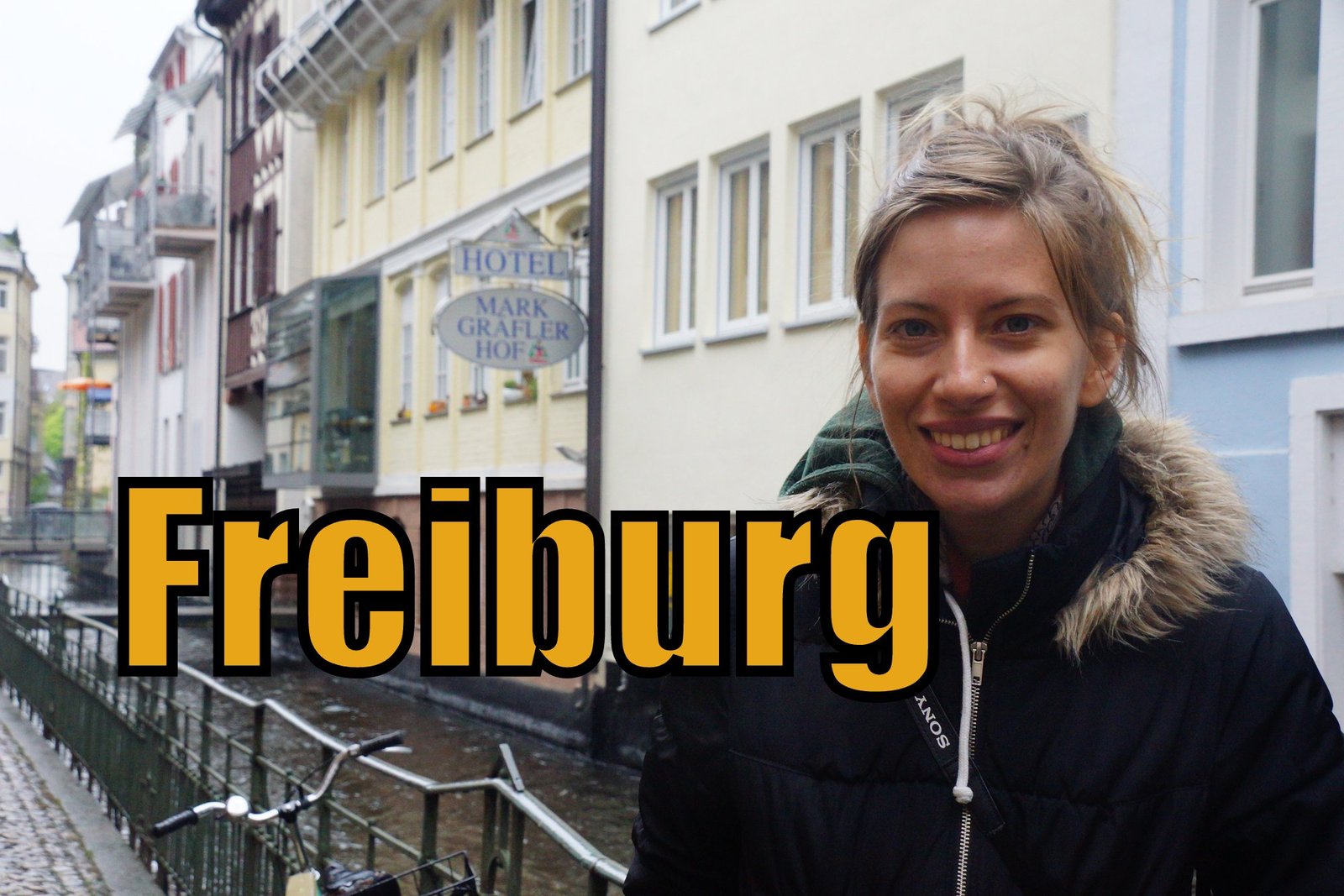

Thanks for your photos and tips Sam. Just arrived in Siem Reap today for a week
Tamil King? Who fed you that b.s.? Angkor Wat Was built by Khmer King Suryavaraman II of the Khmer Empire.
Ultimate collection of pictures!
Especially I love your sunset and tourists flocking towards Angkor Wat pictures. I like this temple great architect, design & stone carving statues.
Thanks Dave!
I’ve visited Angkor Wat four times and I’d gladly go back another 4 times again in my life 🙂
Great Click of magnificent Angkor Wat temple!
Angkor Wat temple is really an evidence of great Indian civilization and architecture. The temple always me attract to visit this great civilized place Angkor wat. I will go there once in my lifetime
Thanks Samuel sharing these great pictures……
Had been there three years ago. The place was magnificent. So rich in cultural heritage 🙂
Amazing photos Samuel! We had planned on finally getting to Cambodia late this year but as it goes for a traveler, our plans have changed. But we have promised ourselves to get there next year! It looks truly amazing… especially in that sunset photo – wow!
whoa!! that sunset photo blew me away. I wanna see the sunrise and sunset when I and my husband go back here..
when we went to see the sunrise, we rode the bike and just imagine how i pedaled so hard and prayed for the sun not to rise fully yet… gahhh our sunrise experience wasn’t so spectacular!!
Angkor Wat is massive, drained my energy here, seriously. And guess what, we went during the Khmer New Year.
Can you imagine the thousands of people walking in and out?
As usual, I love the photos!!
Great photos Samuel! Angkor Wat has been on my ‘must see’ list for a every long time and finally I will be there later this year!
Beautiful photos Sam!!
Great colours
I hope you get to visit. It’s quite the journey, but definitely worth it!
Gorgeous photos. I haven’t yet been but photos are tempting
Nice photos Sam. It certainly is a photogenic place!
Thanks Cam! The temples are fascinating.
some great shots in the Sam – I loved wandering around there, it’s a great place to photograph.
Totally agree that you need to visit the many random temples around it though!
Thanks Chris! Yeah, it really is a wonderful place to visit.
You guys are really selling Angkor Wat very well 🙂 Loved the video and these images are inspiring me to book! thanks
Thanks Victoria! I hope you’ll get a chance to visit soon 🙂
That first photo is amazing! And I love the horse with his fancy headgear.
Thanks Emily! I didn’t notice that fancy horse this time around – it was a photo from 2011 🙂
Great photos mate! Angor really is a stunning place, I took about a billion photos when I was there, they are still mostly unsorted 🙂
Jarmo, it sure is a place for the photographer junkie! I’m still sorting through mine as well 😉
Excellent photo essay, Sam! I especially love the sunset photo and the one of the Buddhist monk. It’s a shame that the scaffolding obscured an otherwise perfect view of the temple; it seems to happen everywhere I go, too! Hope you and Audrey are having a blast livin’ it up in Cambodia. Cheers from snowy (and still cold) Canada!
Thanks Ryan! I hope the cold weather you’re experiencing is soon over. I’ve heard it’s been a brutal spring in many parts of Canada this year.
Stunning images ….. except the one of you :p An awesome place to visit which is difficult to get some different images of so well done again. That sunset image is fantastic must have required some patience to wait until all of the tourists had toddled off back to their hotels. I have a feeling this won’t be your last visit.
LOL, I should keep my ugly mug out of the photo essays. It definitely required some patience for the sunrise and I also had good luck with that weather that morning 🙂
I missed visiting Angkor Wat and Cambodia. I wanted to visit it again soon 🙂
Wends, I hope you get a chance to go soon! I think this is a great bucket item list worth exploring 🙂
Some nice shots here, we had a white sky that day so nice to see it with a blue sky!
Thanks Barry! I think it’s more typical to have a white sky day…
Love the sunset photo. I can’t wait to visit here in a few months time 🙂
Thanks Dean! You’ll love it and I’m looking forward to seeing your photos as well 🙂
And just think some of us have never seen the Temples once. Totally awesome photos sir and thank you for joining me on Twitter! I hope to get there in two years and experience them at Sunrise like you recommend! Safe Travels mi amigo!!!
Thanks Mike! It’s great to be following you on twitter as well and I’m wishing you the best of luck getting to the temples of Angkor sooner rather than later 🙂
Hi Samuel, I visited Angkor Wat by myself in 2005 and I revisited it last November with husband and yes it was also special for me the second time around:) Although there was that green scaffolding, the temple is still majestic. Beautful photos and really good photography tips.
I was there in 2009 and it was disappointing to see that front side of Angkor Wat temple had that green construction tent… and now four years later it is still there. Do they really work on it?
Hahaha…I know what you mean! It seems to always be ‘under construction’ as are many other temples. I kind of miss the good ‘ole days when I nearly had everything to myself and there wasn’t any construction going on.
It does look like a wonderful place to visit. Unfortunately I have confined my travels to one country and don’t think I will ever see it. You must really love it to go back a second time
Thanks Nat, it truly is a wonderful place to visit. Maybe you can make a slight exception to come and check it out in the future 🙂
Angkor Wat is one of those photogenic places I never get tired of looking at.. you did a great job getting some angles and perspectives in these that I hadn’t seen before.. Awesome photos Sam!
Thank you very much! I’ve been lucky to come a few times, so I’m always looking for new ways to experience the temples.